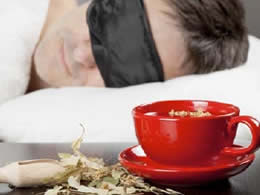Discover now all efficient plants against anxiety. Anxiety medicinal plants.
What are medicinal plants?
Discover the anti-anxiety potential of 56 plants with emphasis on their pre-clinical and clinical reports. Majority of these plants have been found to be acting through modulation of serotonin and γ-amino butyric acid (GABA) neurotransmitters. Plants with potential anti-anxiety profile using pharmacologically validated animal models has been compiled and discussed.
Anxiety: Best 5 plants effective anti-anxiety
In a situation of anxiety plants help to reduce symptoms. Discover the best medicinal plants and herbs that have demonstrated their effectiveness in the treatment of anxiety and its consequences.
Abies pindrow Royle (Pinaceae)
Description: It is widely distributed at elevations between 2000 and 3000 m throughout the western Himalaya from Afghanistan to Nepal. Ethanolic extract of leaves (50-100 mg/kg, p.o.) when administered for three consequent days showed significant anxiolytic effect in rats tested in different paradigms of anxiety i.e. open field exploratory behavior, elevated plus maze and elevated zero maze.
Achillea millefolium Linn. (Asteraceae)
Description: A hardy perennial, native to Eurasia contains active constituent achillein. Aqueous extract of its flowers (8.0 mg/kg, 10.0 mg/kg or 12.0 mg/kg)reduced conflict behavior in female Wistar rats.
Moldenke (Verbenaceae)
Description: Hydroalcoholic extract prepared from its leaves (1.56 to 50mg/kg, i.p.) produced anxiolytic effect in female Sprague-Dawley rats in elevated plus maze test similar to diazepam (1mg/kg, i.p.). Thujone and carvone have been implicated to be responsible for anxiolytic effects.
Albizia lebbeck Benth (Mimosaceae)
Description: It is a tree native to Asia and is used in traditional Chinese medicine to treat anxiety. Butanolic fraction of dried leaves extract (25 mg/kg) presented anxiolytic effect in mice when tested in elevated plus maze. Antianxiety activity of the plant might be due to effect on GABA or saponins present in the extract.
Albizia julibrissin Durazz (Fabaceae)
Description: It is native to southern and eastern Asia, from Iran east to China and Korea. The plant is used in traditional Chinese medicine to treat depression and anxiety. Single or repeated treatment (for 7 days) of male rats with aqueous extract (100 or 200 mg/kg, p.o.) significantly showed antianxiety effect in Elevated PlusMaze (EPM). The anxiolytic effect is abolished by pindolol (10mg/kg, i.p), a5-HT1A/1B receptor antagonist, suggesting the involvement of serotonergic nervous system.
Apocynum venetum Linn (Apocynaceae)
Description: It is a Chinese herb, its ethanolic extract (30 and 125 mg/kg, p.o.) showed significant antianxiety activity in miceusing EPM. This effect was comparable to diazepam (1.5 mg/kg, p.o.) and the5-HT1A agonist buspirone (10 mg/kg p.o.).Anxiolytic-like activity of the extract was mediated via the GABAergic system.
